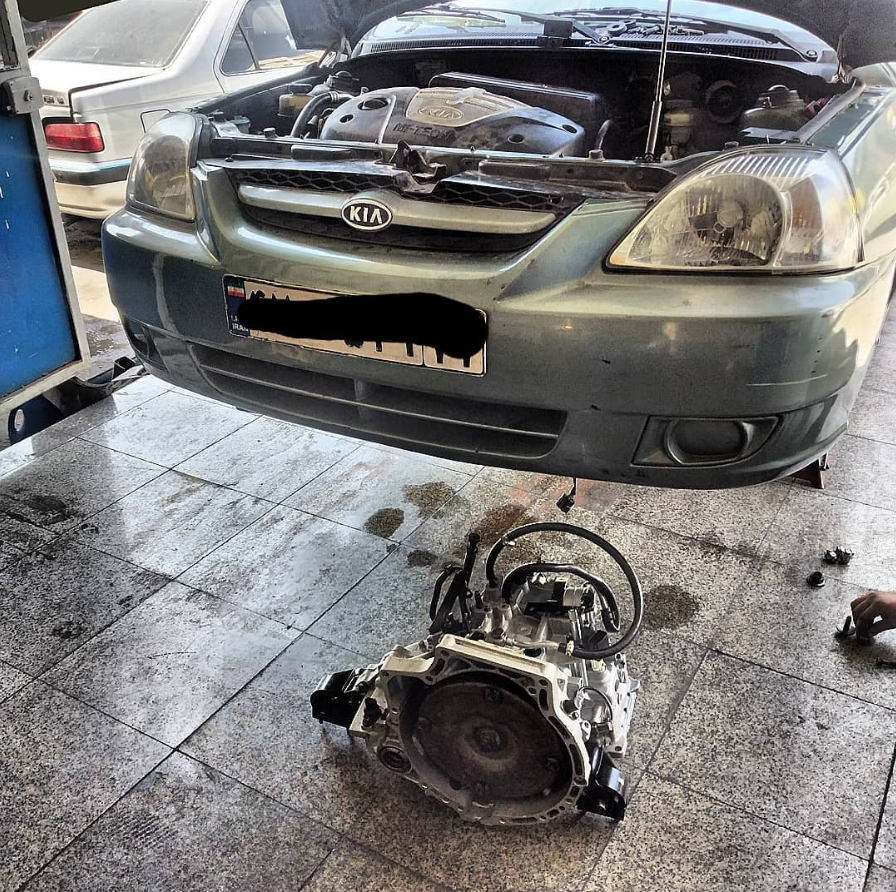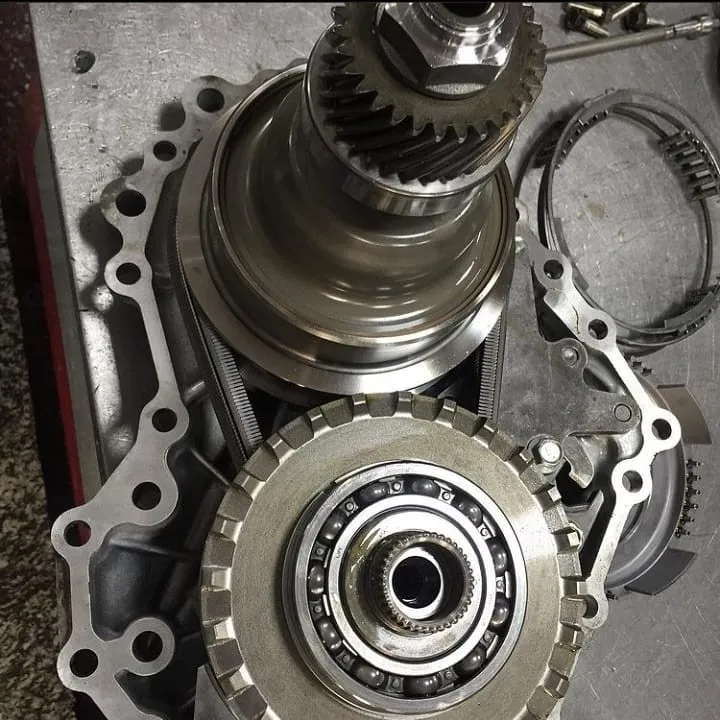The Basics of a Gearbox
A gearbox is a mechanical system used to increase torque and reduce speed by transferring energy from one device to another. It is commonly found in vehicles, machinery, and various equipment where it is necessary to adapt the speed and torque of the motor to the requirements of the application. Here are the basics of how gearboxes work, their types, and their applications:
How Gearboxes Work
- Transmission of Power: A gearbox transmits power from an engine or motor to the device it drives, often through a series of gears.
- Gears: Inside the gearbox, there are different sizes of gears that determine the output speed and torque. The gears can be shifted to change the ratio between the input speed (from the engine) and the output speed (to the wheels or machinery).
- Gear Ratio: This is the ratio of the rotational speeds of the first and last gears in a series. Changing the gear ratio alters the output speed and torque: a higher gear ratio means lower speed but higher torque, and vice versa.
Types of Gearboxes
- Manual Gearbox: Requires the operator to manually select and engage gears. This is commonly found in cars and motorcycles.
- Automatic Gearbox: Automatically changes the gear ratio as the vehicle moves, requiring no manual input from the driver beyond selecting basic drive modes.
- Semi-Automatic and Dual-Clutch Gearboxes: Offer a blend of manual and automatic features, allowing for manual gear selection without the need for a clutch pedal.
- Planetary Gearbox: Features a central sun gear surrounded by planet gears, often used in automatic transmissions due to its compact size and high torque capacity.
The gearbox is an essential component in various mechanical systems, designed to alter the speed and torque of a power source to match the requirements of the application it serves. Here's a closer look at the key components of a gearbox and their functions:
Gears
- Spur Gears: The most common type, featuring straight teeth parallel to the gear's axis. They are used for simple, high-speed applications.
- Helical Gears: These have angled teeth, providing a smoother and quieter operation compared to spur gears. They can transmit power between parallel or crossed shafts.
- Bevel Gears: Designed with teeth that are cut on an angle, bevel gears are typically used in differential drives, which can transmit power to two axles spinning at different speeds, like in a car's differential.
- Planetary Gears: Consist of a central ‘sun' gear surrounded by ‘planet' gears, which are in turn encompassed by a ‘ring' gear. This configuration is compact and capable of high torque transmission.
Shafts
- Input Shaft: Connected to the power source, such as an engine or electric motor, transferring power into the gearbox.
- Output Shaft: Carries the power out of the gearbox to the machine or vehicle being driven.
- Countershaft: Sometimes present, it connects to the input shaft through gears and has gears of its own that mesh with the gears on the output shaft.
Bearings
Bearings support the rotating shafts within the gearbox, reducing friction and wear. They are critical for the smooth operation and longevity of the gearbox.
Clutch
In manual gearboxes, the clutch engages and disengages the gearbox's input shaft from the engine, allowing the driver to change gears. Automatic gearboxes use a torque converter or a dual-clutch system instead of a traditional clutch.
Gear Selector
- Manual Gearbox: The gear selector allows the driver to manually choose gears.
- Automatic Gearbox: Uses a complex system of valves, hydraulic fluid, and electronics to select gears based on the vehicle's speed and engine load.
Synchronizers
Found in manual transmissions, synchronizers help match the speeds of the gear to be engaged with that of the output shaft, allowing for a smooth gear change.
Housing
The housing encloses all the internal components of the gearbox, providing structural support and protection from external elements. It also contains pathways for lubricating oil to keep the internal components cool and reduce wear.
Lubrication System
The lubrication system includes the oil pump, filters, and channels within the housing that distribute oil to minimize friction and wear on the moving parts. Proper lubrication is crucial for the efficient operation and longevity of the gearbox.
Each component of a gearbox plays a vital role in its operation, contributing to the transmission's ability to change the speed and torque output from a power source to drive a machine or vehicle effectively. Regular maintenance of these components is essential to ensure the gearbox functions smoothly and efficiently.
The Evolution of the Gearbox
Trace the development of automotive gearboxes from manual to modern automatic and CVT systems. Discuss innovations like DCT and the impact of electric vehicles on gearbox technology.
Choosing the Right Gearbox for Your Car
Choosing the right gearbox for your car involves considering several factors, including your driving style, performance needs, fuel efficiency, and whether you prioritize comfort over control.
Manual Gearbox
- Pros:
- More control over the car: You can choose which gear to be in, giving you more control over the car's performance.
- Usually cheaper: Cars with manual transmissions tend to be cheaper than their automatic counterparts.
- Better fuel efficiency: Generally, manual cars are more fuel-efficient because they have less complex machinery than automatics.
- Cons:
- Requires more skill: Operating a manual gearbox requires more skill and attention, as you need to manage both the clutch and the gear stick.
- Not as convenient in heavy traffic: Constantly operating the clutch in stop-start traffic can be tiring.
- Best for: Enthusiasts who enjoy the driving experience and want more control over their vehicle's performance, and those looking for a more affordable, fuel-efficient option.
Automatic Gearbox
- Pros:
- Convenience: Automatic transmissions shift gears for you, making them easier to drive, especially in heavy traffic.
- Easier to use: Without a clutch pedal, automatics are simpler to operate, making them a good choice for less experienced drivers.
- Better for multitasking: Easier to handle when you need to focus on navigation or other tasks while driving.
- Cons:
- More expensive: Cars with automatic transmissions are usually more expensive, both in terms of initial cost and maintenance.
- Less fuel-efficient: Traditionally, automatics were less fuel-efficient, though modern automatics with more gears and advanced technology have closed this gap significantly.
- Best for: Drivers who prioritize convenience and comfort, especially in cities with a lot of stop-and-go traffic.
Semi-Automatic and Dual-Clutch Gearboxes
- Pros:
- Faster shifts: These gearboxes can shift gears more quickly than a human can with a manual gearbox, offering improved performance.
- Efficiency: Dual-clutch transmissions combine the efficiency of a manual transmission with the convenience of an automatic.
- Versatility: They offer a manual mode for when you want more control and an automatic mode for ease of use.
- Cons:
- Complexity and cost: These systems are more complex and can be more expensive to repair than traditional manuals or automatics.
- Driving feel: Some drivers find that these gearboxes lack the engagement or feel of a traditional manual transmission.
- Best for: Drivers looking for a blend of performance and convenience, especially those who enjoy driving fast but also face regular city traffic.
Continuously Variable Transmission (CVT)
- Pros:
- Smooth driving experience: CVTs provide a smooth, seamless acceleration without noticeable gear shifts.
- Fuel efficiency: They can be more fuel-efficient in city driving by always selecting the most efficient gear ratio.
- Cons:
- Driving experience: Some drivers find the driving experience with a CVT to be less engaging or enjoyable due to the lack of gear shifting.
- Noise: CVTs can be noisier, especially under heavy acceleration.
- Best for: Drivers who prioritize fuel efficiency and a smooth ride over the feel of traditional gear shifts.
Making Your Decision
When choosing the right gearbox for your car, consider how you use your vehicle, your budget, and what you enjoy about driving. If you love the feeling of control and engagement with the car, a manual might be right for you. If you prioritize convenience, an automatic or a CVT could be a better choice. For those who want the best of both worlds, a semi-automatic or dual-clutch gearbox might be the ideal solution. Remember to test drive different types of transmissions to see which one feels the best for your driving style and needs.

